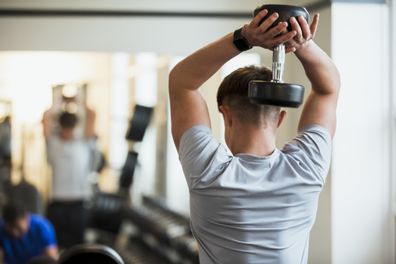In Order to Live Longer, Weigh Exercise and Nutrition Equally
According to a new study published in the British Journal of Sports Medicine, putting all of one’s eggs in either the exercise basket or the nutrition basket cannot protect you from chronic diseases. An effective longevity routine needs to include a balance of both.
An international team of researchers sourced data from 350,000 individuals from the U.K. Biobank, a massive database of health information on British citizens, which medical professionals rely on for these sorts of sweeping analyses. They began the study a decade ago, when the median age was 57, and the participants were all free from “cardiovascular disease, cancer or chronic pain.”
The researchers set rubrics for diet quality and level of activity. For instance, as The New York Times pointed out, the best diets included “over four cups of fruit and vegetables per day, two or more servings of fish per week, less than two servings of processed meats per week and no more than five servings of red meat per week.” Meanwhile, the best exercisers regularly walked, biked and engaged in “vigorous exercise” for more than 10 minutes at a time. Breaking a sweat for just 10 to 75 minutes a week was associated with “lower risk of cardiovascular disease mortality.” That’s one short session a day.
Far and away, the lowest mortality risk came at the center of the Venn diagram: those who sourced high-quality diets alongside consistent movement were likelier to live longer, healthier lives. Their data was especially robust in the realm of cardiovascular health, which is no small achievement. Across the globe, cardiovascular disease (CVD) is easily the leading cause of death.
This might all sound really obvious. We all know that working out and eating right is a great idea. Why do we need expensive, international studies to remind us of something we learned in elementary school health class?
In practice, though, it’s difficult to observe both equally. There are a fair share of people who eat nutritiously, yet don’t observe a consistent fitness regimen (which hamstrings one’s heart health, limits endurance and has an array of unwanted side effects, like poor bone density). On the flip side, there are many amateur and professional athletes who view their concentration as license to eat whatever they want.
Marathon trainees go crazy on Seamless after a long run, weightlifters commit to “dirty bulking” as they try to up their bench press. This reductionist thinking assumes that health is simply a game of calories in and calories out — and goes further to imagine that if you’ve worked really hard on the roads or in the gym, you’ve “earned” a piece of cake.
From a mental health standpoint, yes, it’s important to treat yourself. But from a longevity perspective, it’s important to remember that the body treats unhealthy food choices all the same. Unfortunately, it isn’t possible to outrun or out-lift a steady slate of meals high in sugar, salt and fat. It can come as a shock — to the patient and all their friends — when a high-performing athlete develops a chronic disease. But if that athlete wasn’t favoring a non-processed, whole-food, largely plant-based diet, CVDs are very much in play.
The good news? You don’t have to listen to fitness influencers on Instagram. Your workouts don’t have to be so difficult, and your body doesn’t have to look a certain way. Instead of training like a triathlete, favor simple adjustments to your daily routine that the body absolutely counts as exercise. Walk everywhere; take the stairs where possible; make sure you really sweat a few days a week. If you pair a lifetime of movement with a clean diet, your lifetime’s going to stick around a while.
Thanks for reading InsideHook. Sign up for our daily newsletter and be in the know.
setTimeout(function() !function(f,b,e,v,n,t,s)if(f.fbq)return;n=f.fbq=function()n.callMethod? n.callMethod.apply(n,arguments):n.queue.push(arguments);if(!f._fbq)f._fbq=n; n.push=n;n.loaded=!0;n.version='2.0';n.queue=[];t=b.createElement(e);t.async=!0; t.src=v;s=b.getElementsByTagName(e)[0];s.parentNode.insertBefore(t,s)(window, document,'script','//connect.facebook.net/en_US/fbevents.js'); fbq('init', '381165108746682'); fbq('track', 'PageView'); , 3000);





:quality(70)/cloudfront-us-east-1.images.arcpublishing.com/tronc/WZGIWSRHQNAZ5B7LAEQTNUHSSI.JPG)